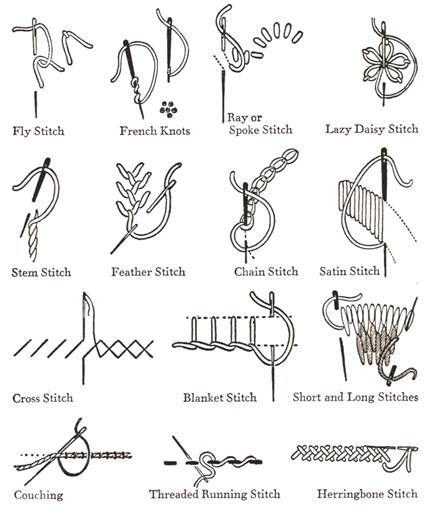
Salty Sam’s Fun Blog for Children
Number 485
The Fox Family
Hello Everyone

Bill and Bob were very excited to tell me about a visitor they had had in their garden this week.
lt was a little fox – in broad daylight!
He sat on the lawn in their back yard and looked at them as they were looking out of the window.
The fox looked very cheeky.
We think he was born early in the spring, and has come out to claim a territory. Foxes start their family in the winter and their babies stay in their den for a few weeks before emerging into the spring sunshine.
The fox was probably born along with his brothers and sisters over in Rocky Bay Park, or even in a hollow in the earth under a shed in a neighbour’s garden. Usually four to five cubs are born at a time. So it is very likely that there is a whole family nearby.
The mother and father foxes will look after their growing family. The cubs have usually left to find their own hunting grounds by the autumn, but some might stay in the family group, and will even help to bring up the next litter of cubs born in the following spring.
The boys look out at the garden at night from their bedroom window to see if they can see the fox again. Foxes usually hunt at night, and they have a very distinctive shape, so their silhouette is easy to spot in the gloom.
They have a pointy snout and quite a hunched back when they are older, and, of course, their famous bushy tail, which is called a brush.
Bill and Bob’s mum said she would have to be careful to make sure the dustbin lid is always on tight because foxes are always on the look out for food that humans leave around.
Bill and Bob’s dad said that Bill and Bob must be sure to keep their rabbits safe now that they know there is a fox around. He told them to keep the rabbits in their hutch for the time being, and he would build them a large run at the weekend when he could get some wood and chicken wire. Then the rabbits could be outside on the grass and in the fresh air when Bill and Bob are at school.
Foxes are omnivores; which means they eat almost anything they can find.
lf they live in the woods or the town, they are at the top of the food chain. That means that they have no natural predators – or in other words, no other animals hunt them. They can live up to about 10 years old.
Foxes will take: birds, mice, rats, reptiles and prey as large as rabbits. They will also eat: eggs, worms, beetles and other insects, as well as fruit from gardens, orchards and hedgerows and berries like blackberries.
They have a reputation for being very cunning hunters. They will stalk their prey and can twist and turn and pounce very quickly to catch their prey. They are often depicted in fairy tales and children’s stories as the bad guy.
ln the city, they breed well, because there is so much discarded food for them to find, and they are not hunted by farmers with guns, however, they can be killed on busy roads.
Life in the city is often easier for them. They will still hunt live prey, but it is easier to pick up food left by humans; it is less effort.
Foxes live alongside badgers in woodland and urban gardens, but the two animals often compete for the same kind of food.
Many species of fox live all over the world; they are on every continent except Antarctica. Some of them look very different to the red fox found here in Europe.
The ones in Africa can look much thinner and have very long legs.
The Arctic fox has a beautiful, thick coat to keep it warm. ln fact, it is one of the thickest coat in the animal kingdom. lt has small ears and limbs to reduce heat loss, and fur on the pads of its feet.
The bat-eared fox has extraordinarily large ears.
Foxes are considered pests by farmers because they will kill chickens, ducks and other small livestock. They also keep rabbit and rat numbers down. Rabbits can eat crops and rats are a health hazard to humans. ln towns, they have been found to be a threat to cats and small dogs.
You might see groups of people fox hunting in old paintings or historical dramas on the television.
Fox hunting originated in Britain in the 1500s. At the beginning of that century wolves had died out leaving no natural predators of the fox left.
Oscar Wilde, who wrote plays for the stage, wrote it was ‘the unspeakable in full pursuit of the uneatable’.
That means he thought the people were behaving terribly when they were hunting for something that they didn’t even want for food.
When a hunt was organized during the winter, between November and March, men and women would ride on horseback with a pack of hounds.
The dogs were cared for by ‘the Master of Hounds’. They were kept together in kennels and looked after there by a kennelman. The dogs were not pets, but, in a sense, working dogs.
The fox was the quarry (hunted). lf it managed to hide away underground, this was called ‘going to ground’. lt was often flushed out by terriers and shot.
The horses were called field hunters and had to be able to jump over ditches, fences and hedges to follow the trail across country because a fox would not be running along roads to get away from the hunt. The riders had to be very skilled at riding and could very easily fall off and hurt themselves.
Some people may have followed on foot as well.
The pack of hounds would be all female or all male dogs taken out at any one time. They would be able to pick up the scent of a fox and chase it. The people on horseback would follow the hounds.
The women would usually wear black jackets, but the men would wear red jackets. Although the jackets were red the colour was called hunting pink, and other colours can also be worn.
lf the hounds hunted down a fox, they would rip it to bits and any person who was new to the hunt would have the fox’s blood smeared on their face. Once they had been ‘blooded’ they were entitled to wear hunting pink.
This tradition began to die out in the 1880s.
Last century, many opponents to fox hunting put pressure on the government to have it banned due to it being cruel. They said it could hardly be called a sport.
Some landowners would not allow a hunt to cross their private property.
Some people tried to stop hunts by getting in the way. This was called hunt sabotage.
Organizations like the Royal Society for the Prevention of Cruelty to Animals and the League Against Cruel Sports took a stand against fox hunting.
Those who hunted said it was a useful, rural tradition.
Since fox hunting was banned in Scotland, England and Wales a few years ago, it is thought that numbers of foxes have dropped. Hunting was never a very efficient way of controlling numbers, and farmers have turned to shooting them instead, which when done skilfully, is a kinder and quicker death. lt is thought that the vast majority of the British population supports the ban. Fox hunting still continues in other countries however.
Some people now participate in drag hunting. This involves a person dragging an object over the ground to lay a scent trail for a pack of hounds to follow. They could use fox urine and oils soaked into a rag.
About 20 minutes later, the hounds are released and the hunt is on.
These kinds of hunts are usually faster and cover more territory than a fox hunt. There is no problem in picking up the specially laid scent and no time is wasted in getting started.
Of course, there is the danger that a fox might get caught up in the fray when the hounds pick up its scent instead of the trail purposely laid for them to follow.
From now on, if Bill and Bob are playing outside, the rabbits will be able to have free run of the whole garden. The fox won’t come back when someone is out there making a lot of noise.
But the rabbits will be tucked up safely every evening before it gets dark!
lf you like my blog, please support it by telling all your friends and followers about it.
Thank you!
And see you again next Fun Friday!
Love and kisses
Salty Sam

www.christina-sinclair.com


Bill and Bob’s Joke of the Week![]()
![]()
Bill: What is small and furry and turns from red to purple?
Bob: l don’t know. What is small and furry and turns from red to purple?
Bill: A fox holding its breath!

Salty Sam © Christina Sinclair 2015
Unauthorized use and/or duplication of material from this blog without express and written permission from this blog’s author and owner is strictly prohibited.
Links may be used to www.christina-sinclair.com

Picture Gallery
 Hunting across the countryside
Hunting across the countryside
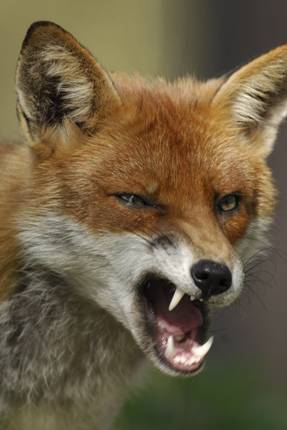 Red fox
Red fox
 A fox’s tail is called a brush
A fox’s tail is called a brush
 Cape fox in Africa
Cape fox in Africa
 African fennec fox
African fennec fox
 Arctic fox camouflaged for the snow
Arctic fox camouflaged for the snow
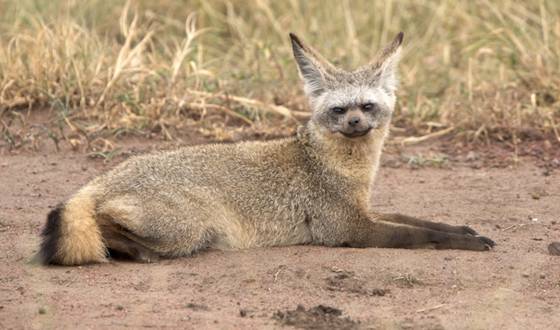 Bat-eared fox living in the African savannah
Bat-eared fox living in the African savannah
(Savannah is grassland with trees)


 THE SALTY SAM NEWS DESK
THE SALTY SAM NEWS DESK

This week, Miss Pringle gave her class some idiom puzzles to work out.
All these phrases have an animal theme.
Do you know what they mean?
- Monkeying around
- Like water off a duck’s back
- Wild horses couldn’t drag someone
- To take the bull by the horns
- To go to the dogs
- A cuckoo in the nest
- A fish out of water
- A pecking order
- Able to talk the hind legs of a donkey
- To take someone under one’s wing
- A wild goose chase
- Watching someone or something like a hawk
- Donkey’s years
- To keep the wolf from the door
- To copy parrot fashion
- Until the cows come home
- The early bird catches the worm
- To have ants in his pants
- To smell a rat
- To poke the bear
- To fly from the nest
- Wouldn’t say boo to a goose
- A little bird told me
- The lion’s share
- The queen bee


*********************
TO ADVERTISE ON THIS BLOG
PLEASE CONTACT:
christina.sinclair.ads@aol.co.uk
*********************

 Quick Quiz
Quick Quiz
These animals are found in forests of North America, but not in forests of Britain.
Can you work out the puzzle to find out what they are?
- B_A_S
- S_U_K_
- E_K
- R_C_O_N_
- C_U_A_S
- W_L_E_
- P_R_U_l_E _
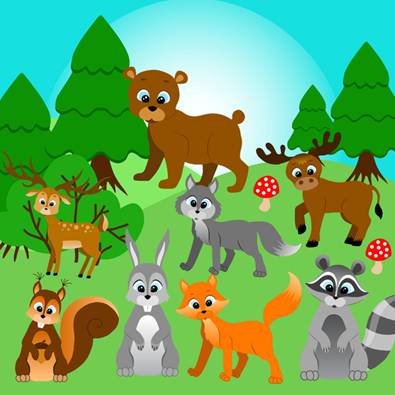



lt’s the Weekend!
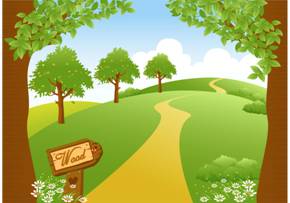
HOW TO MAKE A LORRY DRlVER AND SOME BUlLDERS
If you are going to play with any large toy vehicles out in your garden this summer, you may like this lorry driver to sit in the cab.
There are also two builder friends of his that he visits on site.
You could knit a whole gang of builders if you would like to, and they can have any colour clothes and shoes that you would like them to have.
The striped jumper has stripes of 2 rows of stocking stitch.
FRONT (KNIT ONE)
Using 4mm knitting needles and white dk yarn cast on 10 stitches
Knit 2 rows of stocking stitch
Change to jumper colour dk yarn
Knit 12 rows of stocking stitch
Change to pink dk yarn
Knit 6 rows of stocking stitch
Change to brown dk yarn
Knit 2 rows of stocking stitch
Don’t cast off – leave a length of yarn for sewing up when you cut off your yarn and leave your stitches on this yarn
BACK (KNIT ONE)
Using 4mm knitting needles and white dk yarn cast on 10 stitches
Knit 2 rows of stocking stitch
Change to jumper colour dk yarn
Knit 12 rows of stocking stitch
Change to pink dk yarn
Knit 2 rows of stocking stitch
Change to brown dk yarn
Knit 6 rows of stocking stitch
Don’t cast off – leave a length of yarn for sewing up when you cut off your yarn and leave your stitches on this yarn
LEGS (KNIT TWO)
Using 4mm knitting needles and pink dk yarn cast on 10 stitches
Knit 8 rows of stocking stitch
Change to black dk yarn
Knit 4 rows of stocking stitch to make boots
(Or knit 2 rows of white socks and 2 rows of black shoes)
Don’t cast off – leave a length of yarn for sewing up when you cut off your yarn and leave your stitches on this yarn
ARMS (KNIT TWO)
Using 4mm knitting needles and jumper colour dk yarn cast on 8 stitches
Knit 6 rows of stocking stitch
Change to pink dk yarn
Knit 2 rows of stocking stitch
Don’t cast off – leave a length of yarn for sewing up when you cut off your yarn and leave your stitches on this yarn
TO MAKE UP
- Using over-sew stitching and with right sides together sew side seams of head and body and also the arms and legs using appropriate colours
- Turn right sides out and pull tops of head, feet and hands in tight
- Stuff the body and legs with some stuffing and the ends of the yarn
- Stuff the arms with the ends of the yarn
- Bind a length of pink yarn around the neck and pull in tight then secure ends and push inside the stuffing
- Bind a length of pink yarn around the wrists and pull in tight then secure ends and push inside the arms
- Bind a length of black yarn around the ankles and pull in tight then secure ends and push inside the stuffing
- Sew the tops of the legs to the bottom of the body and the tops of the arms to the sides of the body from behind
- Sew a few stitches of brown yarn onto the top corners of the face to improve the hairline contours
- Add the blue French knot eyes before or after sewing up – wrap the yarn around your yarn needle twice
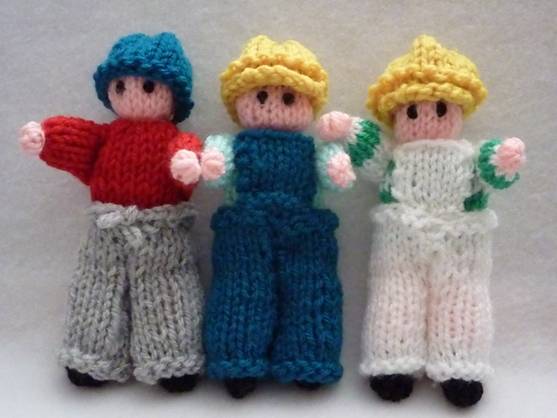
TROUSERS (KNIT TWO)
Using 4mm knitting needles and dark blue dk yarn cast on 14 stitches
Purl 1 row
Purl 1 row
Knit 10 rows of stocking stitch
Decrease 1 stitch at the beginning of the next 2 rows of stocking stitch
Knit 2 rows of stocking stitch
Knit 2 rows of garter stitch
Cast off
BIBS (KNIT TWO)
Using 4mm knitting needles and dark blue dk yarn cast on 6 stitches
Knit 1 row
Knit 1, purl 4, knit 1
Repeat the last 2 rows twice
Cast off
STRAPS (MAKE TWO)
Crochet 8 chains into a length of yarn to match the colour of the dungarees
TO MAKE UP
With right sides together using over-sew stitching
- Sew up the front and back seam of the trousers on the part that will fit onto the body
- Sew along the inside leg seams with right sides together using over-sew stitching
- Sew the bib and straps into place
BUILDERS’ HARD HATS (KNIT ONE)
Using 4mm knitting needles and yellow dk yarn cast on 20 stitches
Knit 1 row
Knit 1 row
Knit 6 rows of stocking stitch
Don’t cast off – leave a length of yarn for sewing up when you cut off your yarn and leave your stitches on this yarn
PEAK (MAKE ONE)
Crochet 5 chains into a double length of yellow yarn
TO MAKE UP
- With right sides together using over-sew stitching to sew up back seam
- Turn right side out
- Attach the brim to the front of the helmet
DRIVER’S BEANIE (KNIT ONE)
Using 4mm knitting needles and blue dk yarn cast on 20 stitches
Purl 1 row
Purl 1 row
Knit 6 rows of stocking stitch
Don’t cast off – leave a length of yarn for sewing up when you cut off your yarn and leave your stitches on this yarn
TO MAKE UP
- Using over-sew stitching and with right sides together sew up back seam
- Turn hat right way out
- Neaten ends
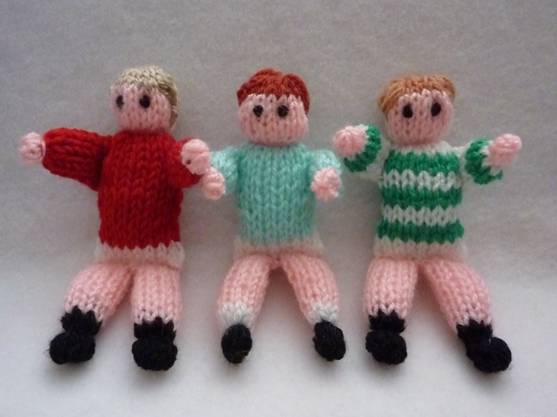
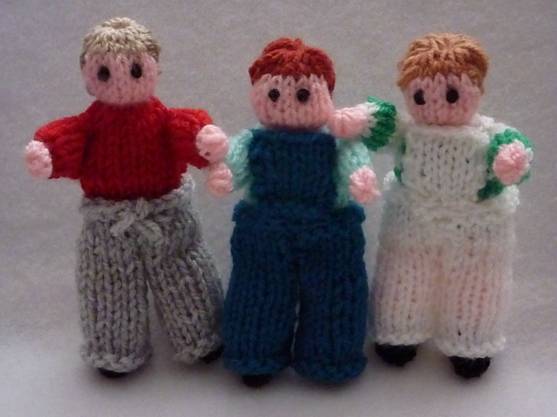
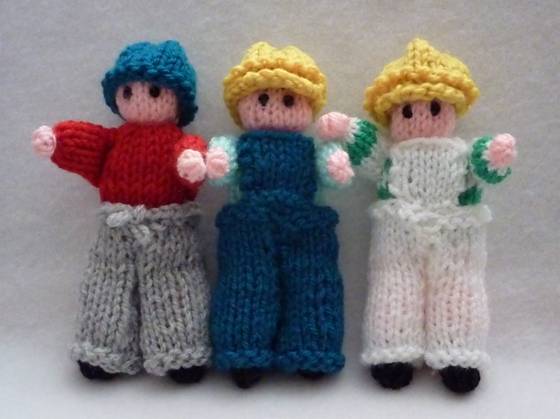
Please note that the material on this blog is for personal use and for use in classrooms only.
It is a copyright infringement and, therefore, illegal under international law to sell items made with these patterns.
Use of the toys and projects is at your own risk.
©Christina Sinclair Designs 2015

Answers to the News Desk Quiz
- Monkeying around – playing about, acting the fool
- Like water off a duck’s back – not concerned or worried about something
- Wild horses couldn’t drag someone – they are determined not to do something and nothing could force them to do it
- To take the bull by the horns – to tackle a problem or person head on
- To go to the dogs – to fail and go to ruin
- A cuckoo in the nest – someone who doesn’t belong has pushed themselves into a place or situation or home
- A fish out of water – someone who does not feel comfortable because they do not belong in a situation or group of people
- A pecking order – a hierarchy of authority – some people who keep a lot of chickens have to put the chickens at the bottom of the pecking order in a pen of their own so that they do not get henpecked and injured too much!
- Able to talk the hind legs of a donkey – able to talk a lot
- To take someone under one’s wing – to take responsibility of showing someone how to do something like a job
- A wild goose chase – looking for something that does not exist
- Watching someone or something like a hawk – watching carefully and intently
- Donkey’s years – a long time
- To keep the wolf from the door – to earn enough money for all your needs
- To copy parrot fashion – to copy something exactly
- Until the cows come home – a long time
- The early bird catches the worm – the first person in the queue gets the best choice
- To have ants in his pants – fidgeting
- To smell a rat – to be suspicious that something is not right – (or ‘it smells fishy’)
- To poke the bear – to deliberately provoke
- To fly from the nest – to leave home
- Wouldn’t say boo to a goose – very timid
- A little bird told me – I am not going to reveal my source of the information
- The lion’s share – the biggest and probably best too
- The queen bee – the most important woman in a group
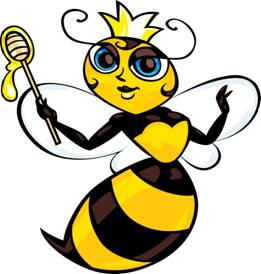


Quick Quiz Answers
- BEARS
- SKUNKS
- ELK
- RACCOONS
- COUGARS
- WOLVES
- PORCUPlNES


Embroidery Stitches
